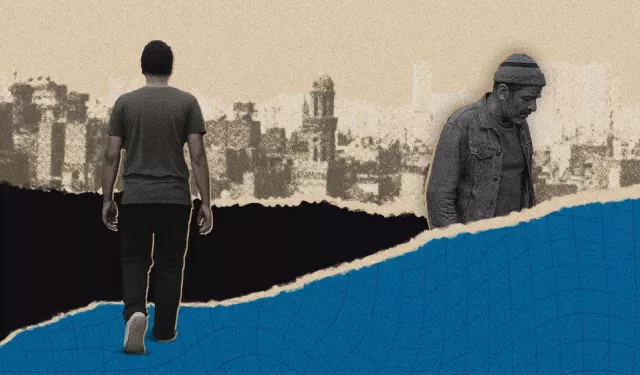
Individualism and Violence| When society disappears
Earlier this year, a disturbing incident unfolded at a prestigious international school in one of Cairo’s new suburbs: a high school student violently assaulted a much younger elementary-school girl, leaving her seriously injured. Yet even more unsettling was the response of the other students who stood by and watched. Some filmed—but no one stepped in.
By contrast, I recall a similar episode nearly thirty years ago. Classmates came to the aid of a boy being attacked by older students. Although they belonged to the same social class of today’s international school students, a clear sense of collective solidarity prevailed. What changed? How did solidarity give way to bystanding?
We can analyze such shifts through various lenses: neighborhood, school, class, culture, and more. But let us begin with the city’s structure.
In gated communities where Cairo’s wealthy now reside, there is a complete separation from the broader society. Residents live in both physical and symbolic isolation, shielded from interaction with others. This fosters a sense of self-sufficiency and detachment.
Such disconnection gives rise to a form of individualism that values autonomy and disengagement from broader social ties. In contrast, not long ago, affluent and poorer neighborhoods coexisted, enabling daily exchanges of experience and shared interests. This environment nurtured solidarity as an integral part of one’s character, regardless of class consciousness.
This broader shift is perhaps best symbolized by a major transformation at one of Egypt’s elite educational institutions: the American University in Cairo. Its relocation from downtown Tahrir Square to the suburban Fifth Settlement in New Cairo was more than a change of address; it signaled a redefinition of the university’s relationship to society. In Tahrir, students engaged with the city and its people. Today, that connection is severed. Some now describe central, mixed-income neighborhoods like Dokki as “poor”—a telling sign of both cognitive and emotional distance.
This mindset echoes Margaret Thatcher’s famous claim: “There is no such thing as society. There are individual men and women, and there are families.”
Individualism here is not a philosophical idea, but a structurally imposed way of life, promoted by powerful interests and political allies.
The isolation and the individualism it spawns are a lived expression of the social consequences of an economic system that deepens inequality and fuels superiority and atomization. Capitalism, with its structural base of competition and individual achievement, thrives in such settings. It reinforces isolation even among people of the same class. Individual identity, as post-structuralist thinkers like Foucault argue, is equally a social construct shaped by power relations.
In his 1975 book “Discipline and Punish”, Michel Foucault argues that privilege often comes with isolation. The privileged are confined within gated compounds, exclusive schools, and segregated universities—spaces populated only by others like themselves. As a result, they develop limited awareness of, or responsibility towards, wider society. An environment fostering a deepening individualism among the wealthy and segments of the middle class that are able to keep pace economically. But what about everyone else?
At the heart of Marxist theory lies the concept of alienation as a framework for understanding class relations in capitalist society. The individual is estranged from their labor, from others, and even from themselves, due to a lack of control over material conditions. Today, alienation extends far beyond the factory floor or workplace, permeating the entire social sphere and manifesting as widespread social exclusion.
As the gap between rich and poor widens, the marginalized increasingly feel excluded from society—powerless to influence it and without the means to change it. This sense of exclusion deepens when access to education, healthcare, employment, and even neighborhoods is effectively reserved for the wealthy.
A class-based alienation takes root, in which individuals feel unrepresented, ignored, and at times, actively antagonized by the society around them. In this context, individualism ceases to be a choice and becomes an existential trap: self-isolation—or, in some cases, violent reaction—emerges as the only perceived path.
The middle class is often seen as the primary incubator of individualism, but this generalization deserves scrutiny. In reality, individualism intensifies as one ascends the social ladder. The affluent adopt isolated lifestyles and personal consumption habits, while solidarity increases among the poor, driven by shared need and fate.
Some segments of the middle class have embraced individualist rhetoric in their aspiration to emulate the bourgeois ideal—what sociologist Fouad Qaoud calls “the behavior of the average person.” Today, with the middle class itself under threat, its turn towards individualism reflects not ambition but fear.
This produces a double paradox. Those who feel relatively secure pursue even greater isolation, retreating into gated communities, even in less exclusive or more affordable areas. New types of international schools have emerged to cater to these aspirations, while remaining accessible to this class.
Meanwhile, those who feel under threat experience deepening alienation, often withdrawing into insular social media networks to vent personal and professional frustration.
The result is a dual alienation: the upper classes are detached from the broader social landscape, while the lower classes are forcibly excluded from meaningful participation. The middle class is caught in between, its position shifting based on how threatened it feels by growing inequality. In all cases, people move within closed circles, eroding the foundations of solidarity and diminishing the potential for collective action.
This transformation reshapes both culture and character, stripping solidarity from class identity. Individualism becomes both a personal disposition and a social norm—one that helps explain acts of violence even within the same class, whether in gated communities or informal neighborhoods. It also sheds light on how bystanding has come to replace solidarity.
Where this condition originated, and the paths that led us here, are questions for the next article.
Published opinions reflect the views of its authors, not necessarily those of Al Manassa.
